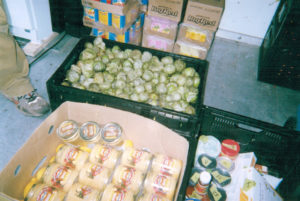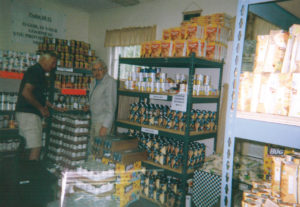If Only….
Janet Poppendieck wrote a book entitled “Sweet Charity” about hunger in America. I found a quote of hers on the internet which inspired this post.
There’s all this food out there. Most people who know about hunger agree that there’s enough food for everyone. If we can stop the push back on this concept, and just feed the people, our lives (everyone’s lives in the whole country) will be very different. Imagine a world without hungry children and grandmothers.
Just for a moment, let’s think of all the ways we can benefit our many people and institutions by using this food.
For starters, think of pantries, soup kitchens, shelters, halfway houses as our tax dollars at work. Much of the emergency food effort is manned by volunteers diverting food headed for the landfill. For my $$$, this recycling effort works primarily to keep people from starving in the streets.
Now, consider the United States Department of Agriculture. As our country accumulates agricultural surpluses, instead of being embarrassed by the food, life will be better when the USDA proudly distributes the surplus to those in need. After all, surplus food is an uptown problem. It’s almost impossible to produce only exactly what we need. Farms just don’t work that way. Weather doesn’t always cooperate. Droughts don’t come by request. Floods have minds of their own. It’s better to produce too much than too little.
Businesses can and should ship excess food to pantries, soup kitchens, shelters, halfway houses. This is a responsible way to dispose of unwanted excess food products. When businesses donate to food banks, they avoid excessive dump fees and accrue tax savings. They reduce dumpster diving.
Universities, hospitals, caterers, restaurants, bakers, schools, can use the food banks to absorb leftovers. In metropolitan areas, the surplus food can go directly to soup kitchens, pantries. This is both a civic responsibility and community outreach.
Community colleges and Universities can recognize that there are impoverished students in their ranks. Pantries and soup kitchens on campus will make it easier for these students to stay in school.
Elementary, Middle, and High Schools will do well to recognize the poverty among the students and staff. Food pantries have a definite place in schools. Backpack programs belong in every school to ensure that students have enough food to eat over the weekends and holidays.
Churches, synagogues, and other religious institutions have opportunities to express concern for their fellow man as they include the poor at the table. Congregations refer to their feeding efforts as outreach. These necessary hunger prevention programs help feed people who otherwise would not have enough to eat and they give the congregations a local outlet for their charity and outreach programs.
Courts and penal institutions can use this concept by having people work service hours at pantries, soup kitchens, shelters, etc. to avoid or lessen incarceration.
Working at a pantry, soup kitchen or shelter provides service opportunities for people of all ages. The more people donate time, the less isolated these facilities become.
Diverting food from landfills offers communities an opportunity to improve our environment. Besides, why throw away good food?
Thank you for reading this blog.
Please refer this article to your preferred social media network.
Don’t forget to join the email list.
Thurman Greco









